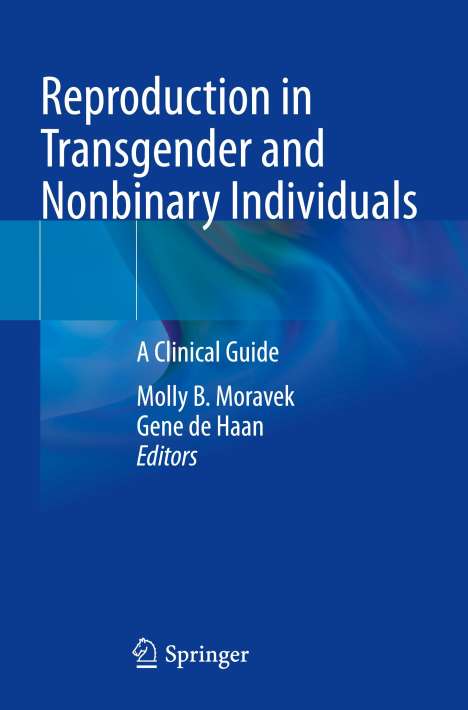Reproduction in Transgender and Nonbinary Individuals
Reproduction in Transgender and Nonbinary Individuals
Buch
- A Clinical Guide
- Herausgeber: Gene de Haan, Molly B. Moravek
- Springer International Publishing, 02/2024
- Einband: Kartoniert / Broschiert, Paperback
- Sprache: Englisch
- ISBN-13: 9783031149351
- Artikelnummer: 11754791
- Umfang: 220 Seiten
- Nummer der Auflage: 24001
- Auflage: 1st ed. 2023
- Gewicht: 341 g
- Maße: 235 x 155 mm
- Stärke: 13 mm
- Erscheinungstermin: 2.2.2024
Achtung: Artikel ist nicht in deutscher Sprache!
Weitere Ausgaben von Reproduction in Transgender and Nonbinary Individuals
Klappentext
There are approximately 1.4 million trans-identified individuals in the US alone, many of whom will undergo gender-affirming medical or surgical interventions to better align their appearance with their gender identity. Multiple major medical societies recommend fertility preservation counseling prior to starting any gender-affirming therapies, but data are limited on the reproductive effects of common gender-affirming hormone regimens. The burden of fertility counseling falls to the hormone providers and surgeons that are encountering these patients, many of whom will not have had adequate training or resources to provide evidence-based recommendations and options. Additionally, many reproductive health care providers are not trained in how to care for gender minorities.The purpose of this book is to be a reference for clinicians and researchers in the field of transgender medicine, to provide up-to-date data and resources to properly counsel transgender and nonbinary patients about the reproductive consequences of gender-affirming interventions and their options for family-building, and to educate providers about appropriate and culturally competent reproductive health care. Effects of masculinizing and feminizing hormone therapy, as well as the fertility preservation options available, are discussed in detail for both adults and youth. In addition to these medical considerations, both psychosocial, legal and ethical considerations are highlighted for a more well-rounded presentation. A final chapter describes how to create a welcome and accepting clinical environment.
Such a reference does not currently exist, leading to the propagation of misinformation and encouraging patients to seek nonmedical sources, such as social media, for their information. Reproduction in Transgender and Nonbinary Individuals fills in this gap as a timely text for reproductive endocrinologists, surgeons and all clinical staff working with this population.


